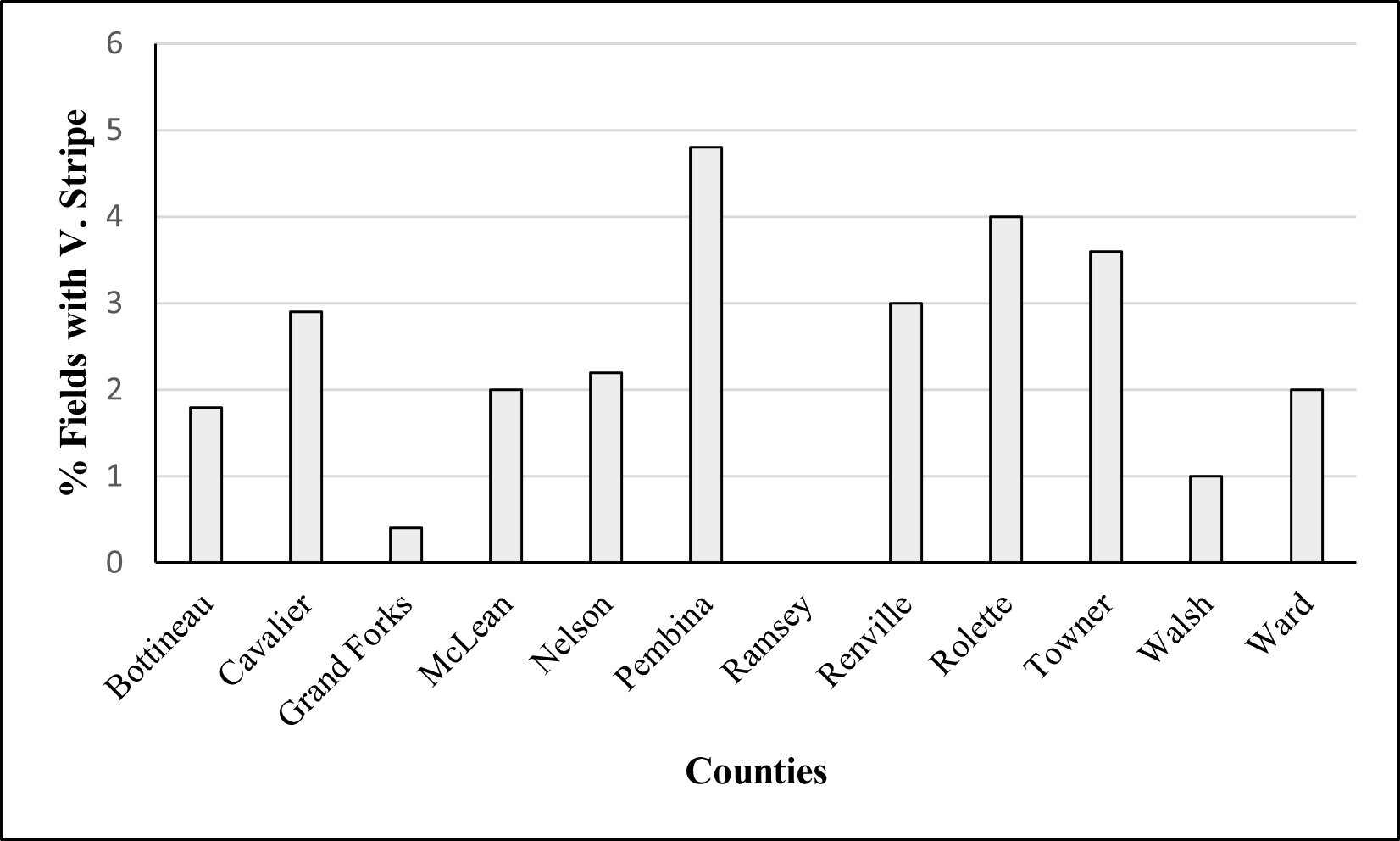Results: The survey was done from fields of major canola-growing counties in North Dakota indicated there was a presence of the disease Verticillium stripe in eleven out of twelve counties (Figure 1). The county-wide incidence data suggest the disease was found in low amounts (five percent and below).
Cultivar Screening to Manage Verticillium Stripe
Canola cultivars/varieties: Eleven commercial canola cultivars with unknown resistance to Verticillium stripe were planted to monitor the level of resistance against the pathogen Verticillium longisporum in the research ground (Table 1). The trial was planted in the first week of June in a randomized complete block design (RCBD) with four replications. The amount of Verticillium stripe infection obtained in the research plots was from natural soil borne inoculum.
Table 1: Commonly cultivated canola cultivars/varieties in North Dakota.
Cultivar | Description |
|---|
CP9978TF | Croplan Genetics |
CP7130LL | Croplan Genetics |
CP7144LL | Croplan Genetics |
InVigor LR344PC | BASF |
InVigor L340PC | BASF |
InVigor L255PC | BASF |
InVigor L345PC | BASF |
InVigor L343PC | BASF |
InVigor L233P | BASF |
CP9221TF | Croplan Genetics |
CP7250LL | Croplan Genetics |
Percent incidence and severity of Verticillium stripe was evaluated on September 9, 2023 by cross-section clipping of canola stems a half inch below ground level. Percent incidence was determined by the percent of infected stems and percent severity was determined by the percent of the pith infected in each stem.
Data analysis: Statistical analysis was done using Agrobase Generation II software. Fisher’s least significant difference (LSD) was used to compare means at p (α = 0.05).
Figure 1: Mean Verticillium stripe incidence and severity percentages were recorded on various commercial cultivars of canola tested in 2023.
| Verticillium Stripe |
|---|
NAME | Incidence % | Severity % |
CP9978TF | 36 | 6 |
CP7130LL | 39 | 8 |
CP7144LL | 25 | 8 |
INVIGORLR344PC | 45 | 12 |
INVIGORL340PC | 34 | 12 |
INVIGORL255PC | 28 | 6 |
INVIGORL345PC | 54 | 9 |
INVIGORL343PC | 29 | 8 |
INVIGORL233P | 40 | 10 |
CP9221TF | 21 | 8 |
CP7250LL | 36 | 12 |
Mean | 35 | 9 |
CV% | 38 | 57 |
LSD | NS | NS |
P-Value (0.1) | NS | NS |
Results: None of the cultivars showed resistance to Verticillium stripe and were statistically non-significant from each other with a mean incidence of 35% and a mean severity of 9% (Table 1).
